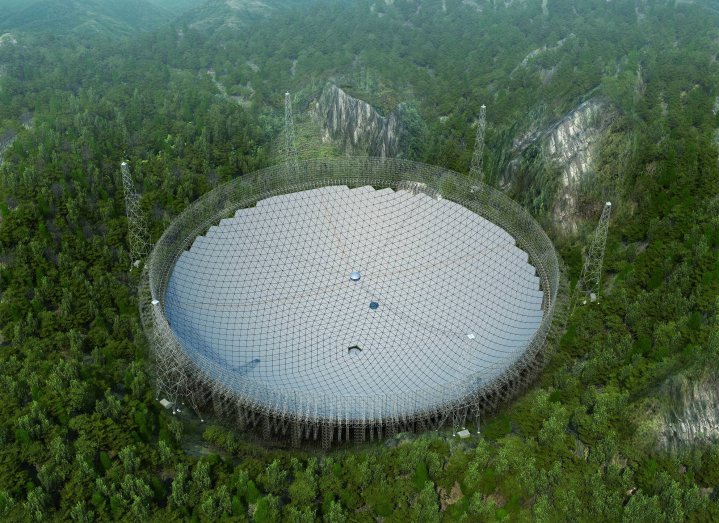China’s largest and most sensitive radio telescope is officially up and running, claims Xinhua, the country’s official state-run media channel. The enormous 500-meter FAST Radio Telescope is the world’s biggest filled-aperture radio telescope, and the overall second-largest single-dish aperture after Russia’s RATAN-600. It is located in Guizhou, Southwest China.
Short for Five-Hundred-Meter Aperture Spherical Radio Telescope, FAST’s nickname is Tianyan, which translates as “Eye of the Sky” or “Eye of Heaven.” The dish itself comprises close to 4,500 individual panels and boasts upward of 2,200 winches on its underside to help shape the surface to aim at different parts of the sky. Its existence reportedly expands by four times the volume of space range that radio telescopes can effectively explore. While only 300 meters of its diameter can be used at any one time, it nonetheless represents an enormous step forward for astronomy. It will be open to researchers from around the world.
A statement by Li Kejia, a scientist at the Kavli Institute for Astronomy and Astrophysics at Peking University, claimed that it will allow, “scientists [to] discover more unknown stars, cosmic phenomena and laws of the universe, or even detect extraterrestrial life.”

The FAST Radio Telescope cost around $170 million to build. The project was initially proposed in 1994, although it took until 2011 for construction to begin. It achieved first light in September 2016, and the time since then has seen the telescope undergo extensive testing. This month marks the official formal opening of the telescope after a three-year trial.
Among FAST’s mission objectives will be to look for pulsars, highly magnetized rotating neutron stars that emit beams of electromagnetic radiation. It discovered two of these as far back as 2017 and has since discovered a total of 102 in just over two years. Initially, the telescope will perform two sky surveys, which will take about five years — with an extra decade for analyzing the information. These surveys will consume around half of its observing time.
According to a press release, FAST’s development involved relocating 7,000 residents in the vicinity. It notes that “an astronomy-themed park has been built around the site of FAST, drawing a large number of visitors and tourists.”


